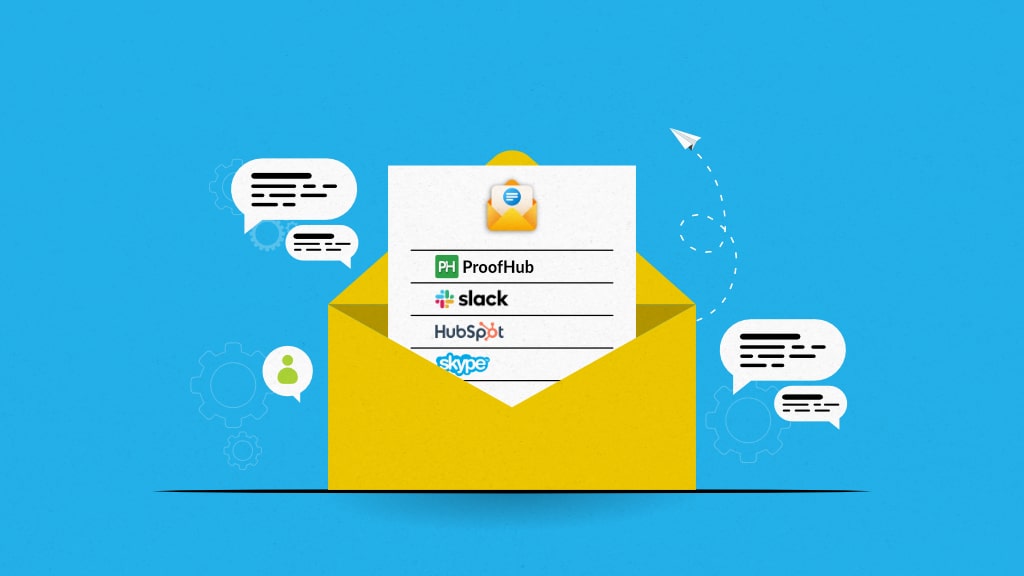Emails used to be the only mode of professional communication in offices a few years ago. Today, there are many other tools in the market that are designed to make communication smoother, faster, and more collaborative. We no longer have to deal with those messy emails and long threads. Business communication and collaboration become much easier, smoother, and faster than they used to be.
If you are looking for Email alternatives to organize your schedule and ease your workload, you are at the right place.
Before jumping to the list, let’s look into the limitations of emails:
What are the limitations of email?
1. Overwhelming inboxes: You often have a pile of emails in your inbox that you need to go through to find the important ones. Managing such an overwhelming volume can lead to missed deadlines and overlooked tasks.
2. Lack of real-time communication: Email is asynchronous in nature, so it is not ideal for instant responses. Relying on emails can disrupt the communication flow, resulting in delays and missed deadlines.
3. Inefficient for team collaboration: Email makes collaboration difficult. Long email threads, updated file versions, and follow-ups can create confusion among team members.
4. Limited file-sharing capabilities: Most email services have limits on file sizes, which makes it difficult to share large files.
5. Time-consuming: Organizing and responding to emails can consume hours of your time every day, which can be spent on other productive tasks.
6. No centralized workspace: Emails are not ideal for centralized communication. You need multiple apps for task tracking, file collaboration, time management, etc, which can reduce efficiency.
Here are 12 email alternatives you must try
1. ProofHub
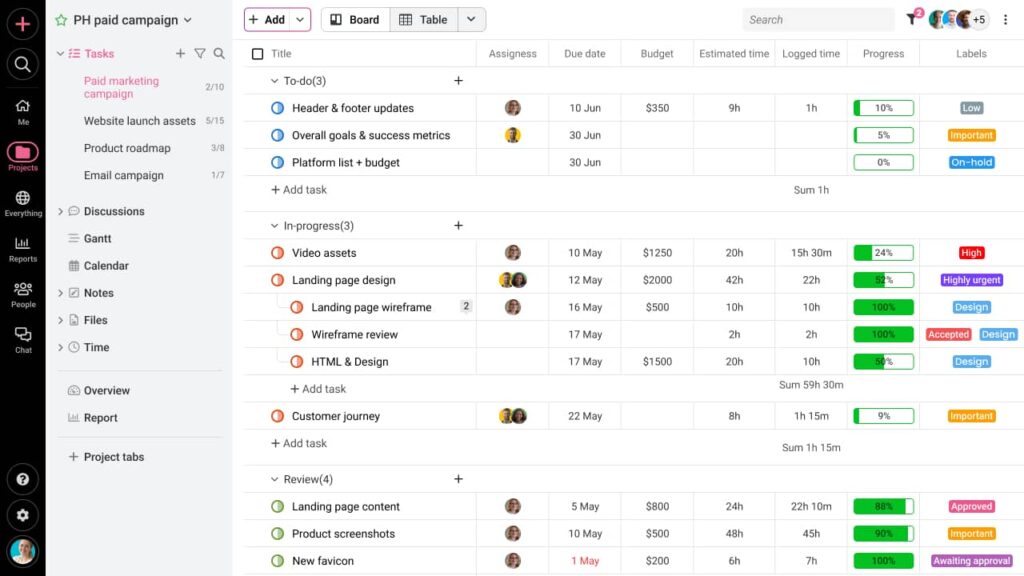
ProofHub is a versatile project management and team collaboration software. Instead of relying heavily on Gmail, ProofHub offers a centralized platform for managing projects and collaborating seamlessly. It provides a dedicated space to create to-do lists, assign tasks to your team, and track progress. Users can also use this tool on iOS and Android mobile apps.
It’s like having a super-smooth chatroom for quick team talks without the email chaos. Plus, you can share documents and work on them together, skipping the hassle of attaching files to emails.
Important announcements have their corner, and the calendar keeps everyone on the same page. With ProofHub, you can say goodbye to the email overload and focus on making teamwork feel like a breeze. It’s your go-to place for projects, tasks, and smooth collaboration!
2. Hobspot CRM
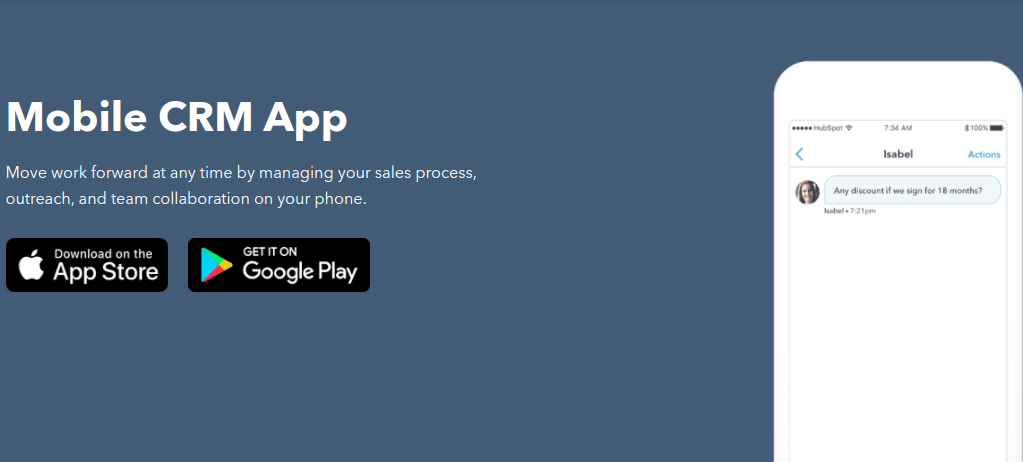
HubSpot uses its customer relationship management (CRM) software to replace Gmail and improve it. You can use this platform to communicate with secure chat options, call recording, and video conferencing calls.
HubSpot CRM integrates with hundreds of other communication and collaboration tools too. You can chat on Facebook Messenger within the platform, or integrate with your Gmail account to keep client information up to date automatically.
The tools work wherever you do, with both desktop and mobile app versions available. HubSpot isn’t just for communicating with clients either. Its CRM helps your team organize their schedules better and communicate these changes with the team.
HubSpot allows for document sharing, scheduling meetings, quotes, and closing deals, all from within the platform, but you can use your favorite tools while you get things done.
Because HubSpot recognizes the importance of email, it offers tools to track and improve your email open rate, compare changes to subject lines or CTAs with A/B testing, and help automate as much of the work as possible.
All of these features are available for free on HubSpot’s CRM.
3. Neo

Neo is one of the best email alternatives, providing an all-in-one business email and growth platform built for small businesses, freelancers, and service providers who want to look professional from day one. It offers custom email addresses, a free domain, a one-page website, and tools like email marketing, appointment scheduling, AI email writing, open-rate tracking, and follow-up reminders.
With up to 100GB storage per mailbox, mobile and web apps, and features like a signature designer and contact groups, Neo gives users everything they need to communicate, convert, and build customer relationships in one place.
Starting at just $1.99/month (billed annually), Neo stands out by replacing multiple subscriptions with a single, affordable solution. It’s perfect for small teams that want simplicity and speed without compromising on credibility.
While its collaboration features are lighter than enterprise suites, its perks—AI-powered tools, a free domain, marketing features, and easy setup—make Neo an ideal pick for businesses that want to scale quickly, look professional, and manage their brand effortlessly.
4. Slack
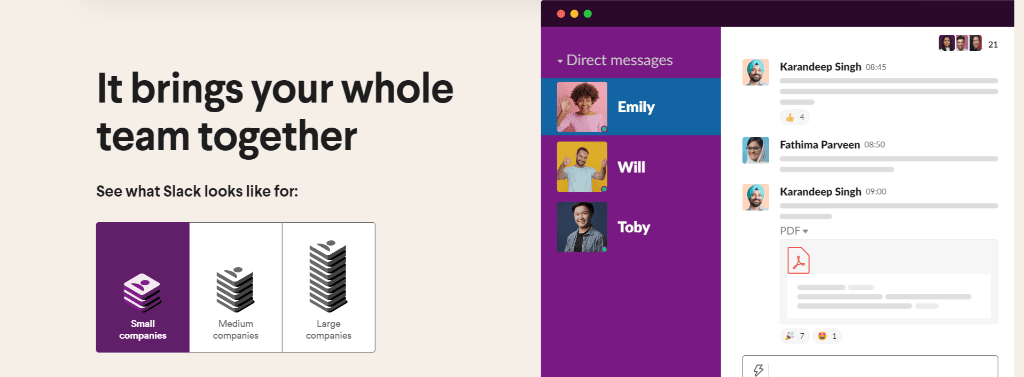
Since its inception, Slack has reduced email volumes by a large percentage. Famously touted as an email killer, Slack has been adopted by many companies and small teams, enabling seamless collaboration.
Slack effortlessly brings all your communications together. There is a channel for every conversation where team members can leave or join it as needed — unlike lengthy email chains.
When your team needs to kick off a project, hire a new employee, deploy some code, review a sales contract, finalize next year’s budget, measure an A/B test, plan your next office opening, and more, Slack has you covered.
It’s time for a game-changer if Slack is not letting you win. Slack alternatives are your lucky move!
5. Mail.com

Mail.com is a web portal and web-based email service provider owned by the German internet company United Internet. It offers news articles and videos and a free webmail application with unlimited storage.
Mail.com allows you to choose from more than 200 domains when you sign up, thus giving it the feel of a personalized email account. Moreover, it collects all your emails from different accounts in one place.
Mail.com can increase your efficiency with its intuitive interface and user-friendly features. So, if you are looking for an effective email service, it fits the bill perfectly.
6. Yandex.Mail
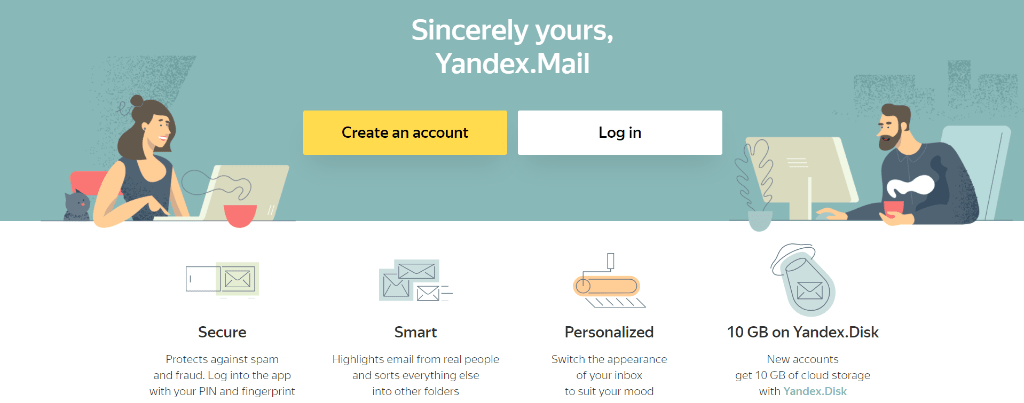
Yandex.Mail is a superb Gmail alternative that comes with great features and reliable security. The smart software highlights important emails and sorts everything else into other folders.
It gives you more than enough cloud storage capacity of 10 GB to put your stuff at one point. You can also switch the appearance of your inbox to suit your mood in Yandex and join multiple Yandex inboxes under one account.
Popular for its superlative security features, it lets you log into the app with your PIN and fingerprint. Moreover, there is a built-in antivirus that checks every incoming mail for viruses and sorts suspicious messages into the Spam folder.
7. Zoho Mail
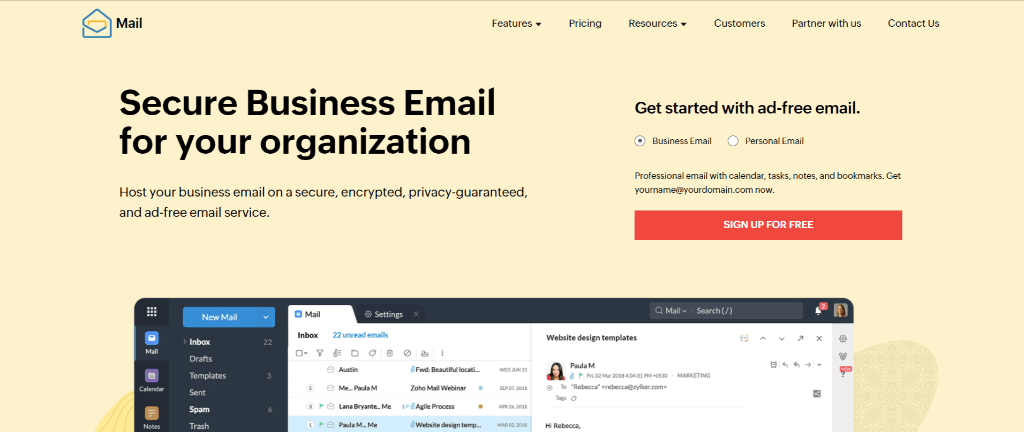
Zoho Mail is the only email alternative designed for business users. The biggest advantage of this cloud-based email is how easily it lets you exchange emails and communicate from any part of the world, gaining the ultimate control of your inbox.
Zoho Mail’s extensive control panel makes it easy to manage emails for your business, as you can set up individual mailbox privileges, email policies, and more.
This Gmail alternative is integrated with products across the Zoho suite, from CRM to Projects. It also comes standard with apps to enhance your inbox and get work done faster.
Read on: Zoho Alternatives – 13 tools your team will love
8. Outlook.com

Whether it’s staying on top of your inbox or scheduling the next big thing, Microsoft Outlook makes it easy to be your productive, organized, and connected self – at home, work, and everywhere in between.
It is an effortless email and calendar app that brings your email, calendar events, and files together in one place. With everything under reach in Microsoft Outlook, you can easily manage work easily and make time for what matters the most.
Life is much more organized and scheduled when you have a tool like Microsoft Outlook to manage your emails and other accounts in a single place.
9. Groove

Groove is a popular Email alternative that enables you to collaborate on all your customer emails, social media posts, live chats, and calls together in one helpdesk.
A help desk software that manages support emails right from your inbox and delivers impressive customer service via email. You can respond to a ticket, change its status, or even assign it to a teammate directly from your email, and it’ll be automatically updated in Groove.
The Groove workflow is similar to Email, with added features that enhance your productivity and provide a powerful Email alternative.
10. Skype

For years, people have been using Skype as a primary method of communication for both professional and personal reasons. This free alternative to Email comes with an impressive range of features for seamless communication and collaboration.
You can have text, audio, and video web conferencing calls to Skype users from outside your company as well.
Unlike other tools, Skype is more functional and less buggy. Even if you don’t have an internet connection at the moment, you can still send messages to users; they will be sent automatically when the connection is restored.
11. Fastmail

FastMail is the best choice if you are looking for a feature-rich Email alternative with a simple interface. As an email-management tool, it lets you easily manage your emails and contacts with folders and labels.
You can also pin important emails to the top to access them without much effort. Apart from this, you can also define a customizable anti-spam filter to keep the inbox junk-free.
FastMail offers its users a Calendar application that automatically syncs with their account and also allows them to send automated Email invites.
12. Yammer
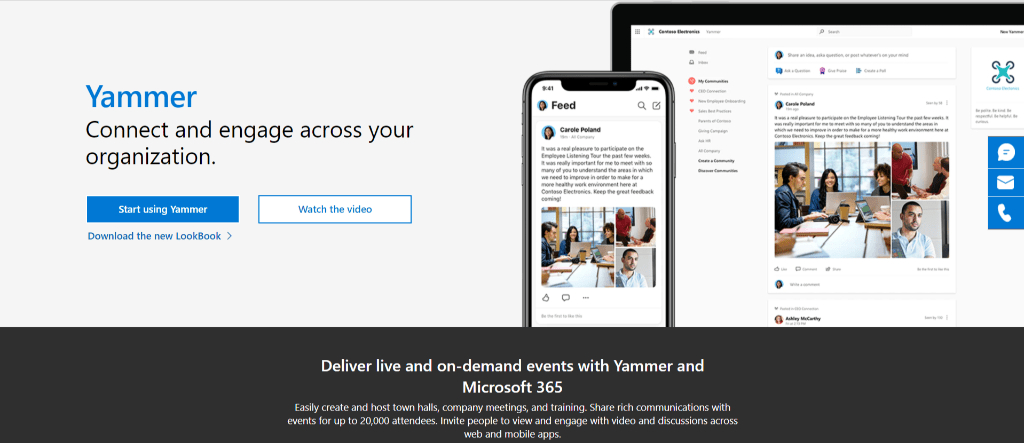
As an email alternative, Yammer connects people across your organization to enable better and faster decision-making. It lets you join meaningful discussions to move your work along faster. Get quick answers to your questions, and have productive, spontaneous conversations with experts and creatives across your organization.
With this email alternative, you can make sure you’re not repeating work that’s already been done and accelerate your productivity. Collaborate in a community to share ideas and solve problems in half the time without wasting time finding email addresses.
Keep docs, photos, and videos in context by adding them to conversations and staying connected with its iOS or Android mobile app.
Organize your business communications and management using ProofHub. One tool for all professionals.
Conclusion
Email still has its utilization; however, there are many more efficient tools available now. These popular email alternatives are worth trying. Whether you’re managing a small team or running a large organization, switching to an email alternative can help you streamline communication, boost productivity, and foster collaboration.
